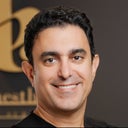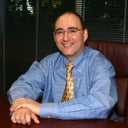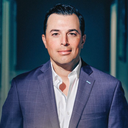I'm 45 years old and considering upper and lower blepharoplasty. I've had 2 consultations thus far and 2 different opinions. Lowers - 1st - transjunctional with fat repositioning + TDA peel. 2nd - fat repositioning and slight skin pinch (no peel). One eye has prominent herniated fat, deep crease and is very dark underneath. Other eye not as bad. I was considering the uppers as well to open my eye a bit more and show slightly more lid but a little concerned if that as I age I may start to look hollow?
Answers (20)
From board-certified doctors and trusted medical professionals
Dr. Vincent N. Zubowicz, MD

Dr. Vincent N. Zubowicz, MD
Board Certified Plastic Surgeon
Answer
Dr. Grigoriy Mashkevich, MD
Dr. Grigoriy Mashkevich, MD
Board Certified Facial Plastic Surgeon
Answer
Dr. Mehryar (Ray) Taban, MD, FACS

Dr. Mehryar (Ray) Taban, MD, FACS
Oculoplastic Surgeon, Board Certified in Ophthalmology
Answer
Dr. Guy Cappuccino, MD

Dr. Guy Cappuccino, MD
Board Certified Plastic Surgeon
Answer
Dr. A.J. Amadi, MD

Dr. A.J. Amadi, MD
Oculoplastic Surgeon, Board Certified in Ophthalmology
Answer
Dr. Scott Trimas, MD

Dr. Scott Trimas, MD
Board Certified Facial Plastic Surgeon
Answer
Dr. Evan Ransom, MD, FACS

Dr. Evan Ransom, MD, FACS
Board Certified Facial Plastic Surgeon
Answer
Dr. Anthony Corrado, DO

Dr. Anthony Corrado, DO
Board Certified Facial Plastic Surgeon
Answer
Dr. Toby Mayer, MD

Dr. Toby Mayer, MD
Board Certified Facial Plastic Surgeon
Answer
Dr. Kenneth D. Steinsapir, MD

Dr. Kenneth D. Steinsapir, MD
Oculoplastic Surgeon, Board Certified in Ophthalmology
Answer
More Eyelid Surgery Questions
See all Eyelid Surgery Q&AWE SEND PRETTY
EMAILS
What’s trending? Who’s turning heads? Which TikTok myths need busting? We’ve got you. No fluff, no gatekeeping—just real talk. Get our free, unfiltered newsletter.